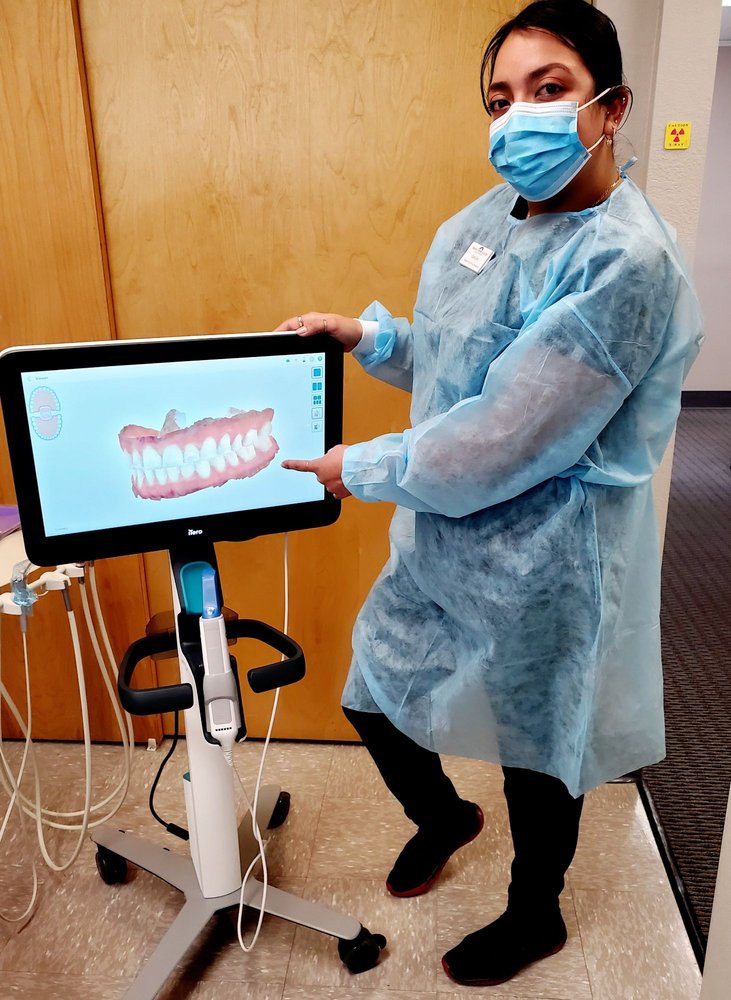Aesthetic Cosmetic Dentistry
What is Cosmetic Dentistry?
Cosmetic dentistry refers to a variety of dental procedures that may be used singly or in combination to make teeth and smiles more attractive. Some of the problems that cosmetic dentistry can correct include:
- Spaces or gaps between the teeth
- Discolored teeth
- Crooked teeth
- Gummy smiles
- Small or short teeth
- Crowded or rotated teeth
- Unsightly or stained fillings
Cosmetic dentistry can correct problems with individual teeth or give a more natural and attractive appearance to multiple teeth. When cosmetic dental procedures are performed on several front teeth in order to produce an overall change in the appearance of your smile the process is often called a “smile makeover“. Smile makeovers begin with a smile design consultation where diagnostic data is gathered and your goals and expectations are discussed. A plan is then formulated to achieve your desired result in harmony with your other facial features and the image you want to project. Although popularized by television shows like “Extreme Makeover” they are not just for television. You can arrange to have your own Oakland smile makeover today. Cosmetic dentistry in Oakland is being practiced in our office everyday.
What kinds of cosmetic dental procedures are there?

Teeth Whitening
Teeth whitening or tooth bleaching is one of the most simple and least expensive procedures in cosmetic dentistry and smile makeovers. Teeth whitening can restore the whiteness to natural tooth enamel to give you a more youthful smile. Most external and some internal stains can be lightened or eliminated by teeth whitening. More on teeth whitening.
Dental Bonding, Tooth Colored Fillings, White Fillings
Dental bonding, also referred to as composite, composite resin or tooth colored fillings, involves using a tooth colored filling material to restore tooth structure that was lost to decay or other damage. This is cosmetic alternative to the older silver (amalgam) filling material. In general, dental bonding is not as durable or stain resistant as treatments using porcelain as the restorative material however it is much less expensive and can be completed in a single visit. If dental bonding chips or breaks it may be repaired instead of replaced if no decay is present. Dental bonding can also be used to change the size and shape of teeth in cosmetic dentistry and smile makeovers. More on tooth colored fillings (white fillings).
Porcelain Veneers
A porcelain veneer is a thin shell of porcelain that is bonded onto a tooth to improve its cosmetic appearance. Porcelain veneers are the latest innovation in cosmetic dentistry. Because of their ability to greatly change the overall appearance of smiles they are most often used in smile makeovers. Compared to dental bonding, porcelain veneers usually look more life like and they have the added benefit of resisting staining as well. Porcelain veneers can correct problems with spaces between teeth, crooked teeth, crowded teeth, internally and externally stained teeth, and short or poorly shaped teeth. More on porcelain dental veneers.
Enamel Recontouring
Cosmetic dentistry and smile makeovers both use enamel recontouring, also called Enamelplasty, to quickly give uneven teeth a more harmonious, even appearance. Enamel recontouring involves removing small amounts of enamel from different areas of the teeth in order to improve their shape and overall appearance by rounding off sharp points and smoothing irregular edges.
Gingival Recontouring and Gingival Grafting
Smile makeovers and cosmetic dentistry are enhanced by gingival recontouring, also called gingivectomy or a “gum lift”. Gingival recontouring involves removal of excess gum tissue covering the front teeth. Excess gum tissue may cause teeth to appear short when they are actually only covered by excess gum tissue. Teeth that once appeared too short can be restored to a more attractive size. Uncovering the teeth can make a dramatic improvement to your smile. Conversely gingival grafting can add gum tissue to cover areas of the tooth which should be covered by gum tissue but have been uncovered by recession, a condition in which the gums pull away from the teeth – exposing the root and making the tooth appear too long.
Inlays and Onlays
When a large part of a tooth is missing, and more strength, durability and esthetics than dental bonding can supply are required, porcelain or laboratory fabricated resin inlays or onlays are excellent options. Inlays cover one or more tooth surface areas between the cusps (a cusp is the pointed chewing section of a back tooth). Onlays replace one or more entire cusps of a tooth. Like dental crowns inlays and onlays are more durable, stain resistant and esthetic than dental bonding. Inlays and onlays also strengthen the tooth they are bonded to more so than dental bonding does. In contrast to dental crowns, inlays and onlays are conservative, requiring the removal of only decayed areas of the tooth, leaving more of the healthy tooth structure intact. Inlays and onlays are more expensive than dental bonding, however, due to their much longer life and color stability, in the case of porcelain, inlays and onlays are a much better long-term investment.
Dental Crowns and Dental Bridges
Cosmetic dentistry and smile makeovers use these restorations when strength as well as esthetics are needed. Unlike porcelain veneers, which cover only the front, sides and chewing edge of teeth, dental crowns cover the entire surface of the teeth and can be made with or without a metal substructure. Crowns have the added benefit of being cosmetic because they can improve the color, size, shape and overall appearance of teeth. Bridges are a series of crowns joined together to replace missing teeth. More on dental crowns and dental bridges.
Make an appointment today to learn how you can get a better smile with cosmetic dental procedures.
